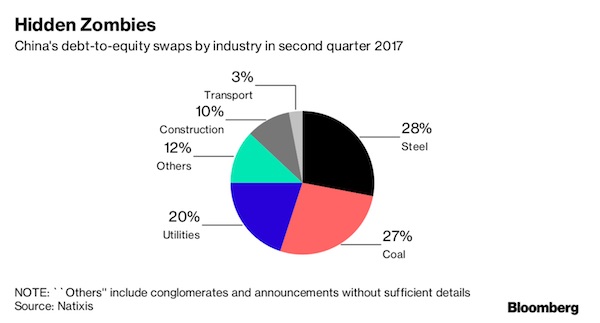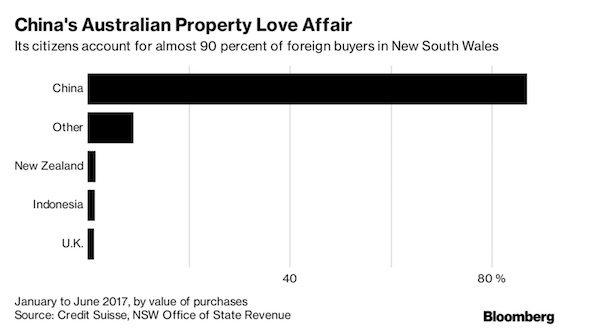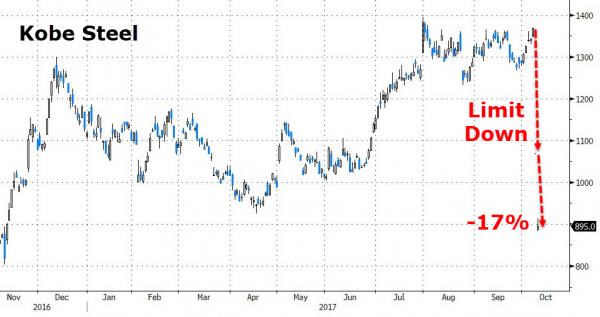
Francisco Goya The Dog 1819-23

A bit overloaded today, so two separate Rattles. For all non-Covid news, check Debt Rattle March 4 2021.

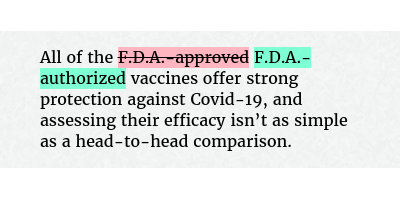

He should perhaps try and keep the country together….
• Biden Slams “Neanderthal-Thinking” Over Texas, Mississippi COVID Policy (ZH)
President Biden has slammed Texas and Mississippi for lifting COVID-19 restrictions, calling it “Neanderthal thinking.” “I think it’s a big mistake…It’s critical, critical, critical that they follow the science…” said Biden.
Newly minted CDC Director Rochelle Walensky wants residents of Texas and Mississippi to continue wearing face masks despite the governors there lifting COVID-19 restrictions amid a decline in cases. “I think we, the CDC, have been very clear that now is not the time to release all restrictions,” said Walensky during a White House pandemic briefing in response to a question about reopening Texas. “Every individual is empowered to do the right thing here, regardless of what states decide.”
On Tuesday, Texas Governor Greg Abbott enraged the left after announcing that the state would lift its mask mandate and reopen businesses next week, while also banning counties from fining or jailing people who disregard local measures. Effective March 10, all businesses will be allowed to open at 100% of capacity, Abbott said during a media briefing in Lubbock on Tuesday. His executive order allows county judges to reinstate anti-virus rules should hospitalizations surge. “Too many Texans have been sidelined from employment opportunities; too many small-business owners have struggled to pay their bills,” the Republican governor said. “It is now time to open Texas 100%.”

…because people see things in different ways:
• 16 States Are Now Following The Science (Schachtel)
It took an entire year, but lockdowns and mask mandates are officially incredibly unpopular with half of the country, to the point that governors are rapidly making sweeping changes to their year-long COVID-19 policies. Jumping onto the coattails of pro-individual freedom leaders like governors Ron DeSantis (R-Florida) and Kristi Noem (R-SD), the governors of Mississippi and Texas decided Tuesday to announce an end to business restrictions and statewide mask mandates. Both Tate Reeves (R-MS) and Greg Abbott (R-TX), who had long taken a nanny state approach to the COVID-19 crisis, acted almost simultaneously to announce the end of statewide restrictions. The centrally planned solutions to COVID-19 have failed spectacularly, and the American people have taken notice of this reality.
Hundreds of millions have now been through a full year of government-imposed tyranny on both a federal and state level. Whether it was a travel ban, an endless series of lockdowns, mask mandates, countless emergency orders, business closures, and the like, not a single top-down order from the federal or state level did anything productive for the wellbeing of Americans. None of it worked. All of it served as a net negative. The people have noticed. Now that their constituents have had enough, politicians on the Right are fast departing from the COVID tyranny, and attempting to secure what is left of their political aspirations. Abbott and Reeves are not the only GOP governors moving fast in ending the restrictions, several other governors have recently acted to roll them back.
On February 12, Montana Governor Greg Gianforte lifted his statewide mask mandate. On February 8, Iowa Governor Kim Reynolds lifted Iowa’s statewide mask mandate along with several other restrictions. On February 22, North Dakota took it a step further. Its legislative body took the bold step in voting to make mask mandates illegal. As of March 2, there are now 16 states that no longer have statewide mask orders. However, across the political divide, there remains no end in sight to the corona madness. Much of the Left continues to embrace and root on endless COVID-19 restrictions, and the hijacking of individual rights in the name of a virus. Governor Gavin Newsom of California took to Twitter in describing the end of restrictions as “absolutely reckless.” It took long enough, but it’s now official: Governors who continue to impose lockdowns and mask mandates are fast becoming as popular as Red Sox fans in the Yankee Stadium bleachers, at least in half of the country.

Vit. D, ivermectin, HCQ get heavily censored on social media.
• The War on ‘Misinformation’ Claims Two Victims (Pfeiffer)
The effort to manage COVID treatment information has its roots, in part, in a sad chapter in American science and journalism: The Trump endorsement last spring of hydroxychloroquine. In an instant, early treatment was turned into a right-wing myth of interest only to Fox News. The rest of the press was merciless in repeating assertions that a reliable pharmaceutical workhorse used for several diseases was dangerous for COVID. Multiple studies have since refuted that and shown effectiveness in early illness, something most people do not know. Dr. Mobeen Syed was among the first last March to explore HCQ’s potential in a YouTube video that went viral and landed him in a love-it/hate-it, right/left firestorm. “I started getting so many threats,” he said, prompting him to take the piece down himself.
After that, however, YouTube itself decided what the 250,000 subscribers to Drbeen Medical Lectures should see, removing videos willy-nilly, it seemed, on Vitamin D, remdesivir and, what others said was frequently censored, ivermectin. Among other examples of this new censorship trend: On Jan. 31, Facebook removed a page called Ivermectin for MDs Team, with 10,200 members from more than 100 countries. The last straw was a post on the Slovak Ministry of Health’s decision to allow use of ivermectin, which Facebook censors “believe is harmful to physical integrity,” the administrator wrote. Facebook also ruled that news of ivermectin approval by a southern state in Brazil violated its standards. Put another way, the social media giant did not like two independent government decisions and thought it knew better.
On Jan. 12, Twitter ruled a tweet by the Brazilian Ministry of Health — 1.2 million followers — was “spreading misleading and potentially harmful information.” Why? It urged people with COVID symptoms to “go to a Health Unit and request early treatment.” More egregious, YouTube recently expunged two videos posted by a U.S. Senate committee on Dr. Kory’s ivermectin testimony. Further, it purged a video in which a scientist discussed his review of ivermectin as part of a project for a World Health Organization-hosted agency called Unitaid. YouTube even removed a video on its censorship of ivermectin. In a hint at how vast the censorship is, Facebook asserted proudly in a Feb. 8 website post that it had “removed more than 12 million pieces of content on Facebook and Instagram containing misinformation that could lead to imminent physical harm.”
Seven of my posts, on an article I wrote with multiple links to the science of ivermectin, were stricken with that label. (I got off on a 14-hour posting ban.) My efforts were fruitless to get Facebook, Twitter or Google, which owns YouTube, to explain the methodology it uses to censor. In a public post, YouTube says it disallows information that “contradicts local health authorities” and the World Health Organization. Twitter maintains it culls “content that is demonstrably false or misleading and may lead to significant risk of harm.” But who actually decides on a video or post? Are algorithms by technicians making the decisions or scientists and doctors? Should government guidelines be the ultimate yardstick when these are evolving — and sometimes wrong?

“This is about the world. It’s global.”
• Brazil’s Covid Outbreak Is Global Threat, Opens Door To Lethal Variants (G.)
Brazil’s rampant coronavirus outbreak has become a global threat that risks spawning new and even more lethal variants, one of the South American country’s top scientists has warned as it suffered its deadliest day of the pandemic. Speaking to the Guardian, Miguel Nicolelis, a Duke University neuroscientist who is tracking the crisis, urged the international community to challenge the Brazilian government over its failure to contain an epidemic that has killed more than a quarter of a million Brazilians – about 10% of the global total. “The world must vehemently speak out over the risks Brazil is posing to the fight against the pandemic,” said Nicolelis, who has spent most of the last year confined to his flat on the westside of São Paulo. “What’s the point in sorting the pandemic out in Europe or the United States, if Brazil continues to be a breeding ground for this virus?”
Nicolelis said the problem was not simply Brazil – whose far-right president, Jair Bolsonaro, has repeatedly spurned efforts to combat a disease he calls a “little flu” – being “the worst country in the world in its handling of the pandemic”. “It’s that if you allow the virus to proliferate at the levels it is currently proliferating here, you open the door to the occurrence of new mutations and the appearance of even more lethal variants.” Already, one particularly worrying variant (P1) has been traced to Manaus, the largest city in the Brazilian Amazon, which suffered a devastating healthcare breakdown in January after a surge in infections. Six cases of that variant have so far been detected in the UK. “Brazil is an open-air laboratory for the virus to proliferate and eventually create more lethal mutations,” warned Nicolelis. “This is about the world. It’s global.”
The alert came as Brazil hurtled into the most deadly chapter of its year-long Covid crisis, with hospitals around the country collapsing or on the verge of collapse and the average weekly death toll hitting new heights. A record 1,726 fatalities were reported on Tuesday, the highest number since the pandemic began. “It’s a battlefield,” a doctor in the southern city of Porto Alegre told local television after his hospital’s intensive care unit and mortuary ran out of space. Nicolelis said Bolsonaro’s failure to halt the outbreak and launch an adequate vaccination campaign had created a domestic tragedy from which Latin America’s most populous nation was unlikely to emerge until late 2022.
“We’ve now gone past 250,000 deaths and my expectation is that if nothing is done we could have lost 500,000 people here in Brazil by next March. It’s a horrifying and tragic prospect but at this point it’s perfectly possible,” he said, predicting a traumatic month as public and private hospitals buckled. “My forecast is that if the world was appalled by what happened in Bergamo in Italy and what happened in Manaus a few weeks ago, it’s going to be even more shocked by the rest of Brazil if nothing is done.”

What does that even mean when the first ones were never properly tested?
• Vaccines Tweaked For Covid Variants Fast-Tracked Safely – UK Regulator (G.)
Coronavirus vaccines tweaked to deal with variants will be fast-tracked without compromising on safety or effectiveness, the UK’s regulator has said. The approach will be similar to the regulatory process for the modified flu vaccine, to deal with new strains each year, with a brand new approval not required. Scientists have previously said a Covid-19 variant resistant to the current crop of vaccines is likely to emerge at some point, but vaccines can be adapted quickly. The guidance states coronavirus vaccine manufacturers will need to provide robust evidence that the modified jab produces an immune response. However, lengthy clinical studies are deemed not to add to the regulatory understanding of their safety, quality or effectiveness and will not be needed.
The Medicines and Healthcare products Regulatory Agency (MHRA) said researchers are in a better position to measure protection by looking at antibodies in the blood after vaccination, reducing the need to wait and see whether people in a trial become infected with the virus. It said this will “significantly reduce” the length of time it takes for the modified vaccine to be ready. The guidance from the Access Consortium – a group made up of regulatory authorities from the UK, Australia, Canada, Singapore and Switzerland – requires that, as well as evidence on immune response, the modified vaccines must be shown to be safe and of the expected quality. It says data from the original clinical trials and ongoing studies on real-world use in millions of people could be used to support any decision by the regulators.

Harmless?
• Injuries Reported to CDC After COVID Vaccines Climb by 4,000 in One Week (CHD)
The latest data made public by the Centers for Disease Control and Prevention’s (CDC) Vaccine Adverse Event Reporting System (VAERS) on deaths and injuries reported after COVID vaccines are in line with trends that have been emerging since the first data were released in December. Between Dec. 14, 2020 and Feb. 18, 2021, 19,907 reports of adverse events have been reported to VAERS, including 1,095 deaths and 3,767 serious injuries. About a third of the deaths reported occurred within 48 hours of vaccination, and 48% of the people who died became ill within 48 hours of being vaccinated. About 21% of the deaths were cardiac-related. As The Defender reported last month, Dr. J. Patrick Whelan, a pediatric rheumatologist, warned the U.S. Food and Drug Administration in December that mRNA vaccines like those developed by Pfizer and Moderna could cause inflammation of the brain and heart, and other injuries in ways not assessed in safety trials.
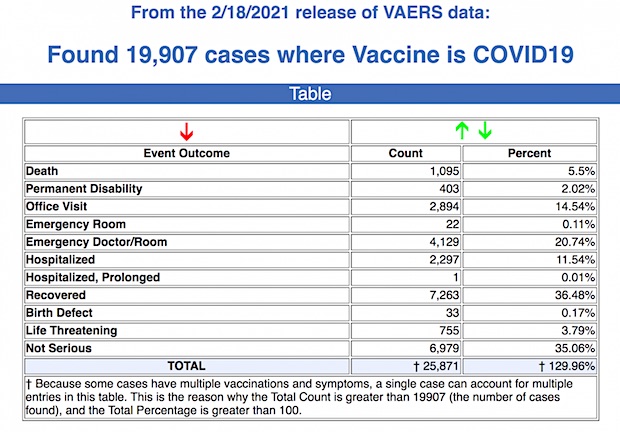
Of the reported deaths, 966 were reported in the U.S. and 129 outside the U.S. The average age of the deceased was 77.8, the youngest was 23. Of those who died, 53% were male, 46% female and 1% of the reports did not include gender. Of those who died, 56% received the Pfizer vaccine, and 43% got the Moderna vaccine. The number of serious adverse events reports increased by 641 this week, to a total of 3,767 between Dec. 14, 2020, and Feb. 18. Adverse reaction reports from the latest CDC data include: • 160 reports of adverse reactions affecting pregnancy, including 47 miscarriages/preterm births • 1,135 anaphylactic reactions, 64% of which were reported after a Pfizer vaccine and 35% after the Moderna vaccine • 257 reports of Bell’s palsy (Pfizer 71%; Moderna: 29%)
By comparison, during the same time period — Dec. 14, 2020 – Feb. 18, 2021 — VAERS received reports of 83 deaths following flu vaccines. According to the VAERS website, “it is important to note that for any reported event, no cause-and-effect relationship has been established … VAERS collects data on any adverse event following vaccination, be it coincidental or truly caused by a vaccine. The report of an adverse event to VAERS is not documentation that a vaccine caused the event.” VAERS is the primary mechanism in the U.S. for reporting adverse vaccine reactions. Reports submitted to VAERS require further investigation before a determination can be made as to whether the reported adverse event was directly or indirectly caused by the vaccine.

Or not harmless?
• 34 Spontaneous Miscarriages, Stillbirths After COVID-19 Vaccination (ET)
Thirty-four cases of pregnant women experiencing spontaneous miscarriages or stillbirths after receiving a COVID-19 vaccine have been submitted to the Vaccine Adverse Event Reporting System (VAERS). VAERS is a passive reporting system that allows people to submit a report of an adverse event after vaccination and is run by the Food and Drug Administration (FDA) and the Centers for Disease Control and Prevention (CDC). Research funded by the CDC has shown that fewer than 1 percent of reactions from vaccinations are being reported on VAERS. Reports made to VAERS do not necessarily mean that a vaccine may have caused the event or reaction. Miscarriages are labeled as spontaneous abortions or abortions in the reporting system.
Many cases of spontaneous miscarriages occurred in the first trimester, or the first 12 weeks of the pregnancy, with 25 occurrences after being immunized with a Pfizer-BioNTech vaccine. While the four cases of stillborns occurred in either the second (weeks 13-27) or third trimester (weeks 28-40). According to Verywell Health, an online resource on health-related issues: “Research suggests that between 10% and 20% of women with a medically confirmed pregnancy will end in miscarriage. Eighty percent of these will occur during the first trimester.”
[..] Dr. Shelley Cole, MD, an OB-GYN and a member of America’s Frontline Doctors, says it’s concerning that a vaccine still in an experimental phase is being recommended to pregnant and lactating women and that science is no longer protecting them. “As an obstetrician-gynecologist, it is a concern,” Cole told The Epoch Times. “We’re [now] throwing science and the scientific medicine method out the window and jeopardizing pregnancies and future pregnancies.” “It concerns me that the CDC says that there are no studies, but it’s okay to get it and you don’t even need to discuss it with your doctor,” Cole added. “I mean this is the opposite of everything that the scientific models and methods, and standard of care has been for a century.”
[..] The politicization of the drug continues to overshadow studies that show hydroxychloroquine is safe and effective in treating COVID-19. According to c19study.com that tracks clinical trials on hydroxychloroquine around the world, all 27 hydroxychloroquine studies on early treatment reported a “positive effect and an estimated reduction of 65 percent in the effect measured (death, hospitalization, etc.)” However, the drug is “not effective when used very late with high doses over a long period.”

They all go out of their way to claim there is no proof of a direct link between deaths, and “other adverse reactions”, and vaccines. But it’s a bit much.
• Danger of mRNA Vaccines To Elderly: 16 Deaths In Switzerland (GT)
The deaths of 16 elderly people in Switzerland after being inoculated with Pfizer and Moderna COVID-19 vaccines underscore the potential danger of mRNA vaccines to the age group, Chinese vaccine experts said, further calling for caution. At least 16 people died after receiving vaccines in Switzerland, the Swiss Agency for Therapeutic Products (Swissmedic) was quoted as saying by Sputnik in a report on Saturday. The agency said it had obtained about 364 suspected adverse drug reactions, with 199 incidents linked to the vaccines developed by Pfizer and BioNTech, and 154 to Moderna’s drug, said the report. Swissmedic said the average age of the deaths was 86 and most of them had pre-existing diseases, adding there was no evidence to suggest that the vaccines were the cause of death.
Chinese experts said the incidents should be assessed cautiously to understand whether the deaths were caused by the vaccines or other preexisting conditions in these individuals. Previously, Norway reported 23 deaths in connection with vaccinations, all of whom were over 80 years old. The COVID-19 vaccines from BioNTec/Pfizer and Moderna were used in Norway. A Chinese immunologist who requested anonymity told the Global Times that the large-scale use of mRNA vaccines carries the risk of causing abnormal immune dysfunction, allergy or even death, especially among the elderly and people with underlying diseases. The immunologist suggested individuals with preexisting conditions, the elderly and those with vulnerable immunity not be given vaccines.

And neither do those in Germany and Switzerland.
• Half Of French Care Home Workers Don’t Trust Vaccine (R.)
Around half of health workers in French care homes do not want to be vaccinated, according to the group of experts guiding the state’s vaccine rollout – compared to only 20% of the residents who have not been inoculated. If significant numbers of care home workers do not get the jab, they could transmit the disease to residents who are not vaccinated and at high risk of serious illness, say advocates for the elderly. One reason for the scepticism is that those recommending the vaccine are the same people – the French state – whom care home workers blame for their low pay and tough working conditions, said Malika Belarbi, a care worker and trade union official. “There’s a complete loss of trust,” she said. The issue is not unique to France. In Germany, care home operator BeneVit Group surveyed staff in November and found only 30% wanted to get vaccinated.
Peter Burri, head of ProSenectute, Switzerland’s biggest advocacy group for seniors, said at most half of nursing staff in the medical sector were willing to get inoculated. [..] Regulators around the world have repeatedly said speed will not compromise safety and vaccine developers have said they will not cut corners in testing for safety and efficacy. The quicker results have stemmed from conducting in parallel trials that are usually done in sequence and can take years. Trials for the shots developed by Pfizer, AstraZeneca, Moderna and Johnson & Johnson have shown only temporary side-effects. France’s state drug safety watchdog has said the procedure for approving the vaccines ensures they are safe and that it monitors side-effects and has seen nothing to warrant stopping their use.

Google translate
“It seems as if we don’t care that people come to the hospital and die in the meantime.”
10 micrograms= 400 IU. Useless.
• Dutch Health Council: “Too Early” For Advice On Vitamin D Against Corona (AD)
Based on the current state of science, according to the Health Council, it is “impossible to assess” whether taking vitamin D can contribute to the prevention of corona. “There is still too little useful research available on this,” said the government’s advisory body. According to the advisory board, sufficient research is available into the prevention of other acute respiratory infections. The chance of respiratory infections is about 10 percent lower if you take vitamin D. But the Health Council sees no reason in this to adjust the existing advice for taking vitamin D. Children up to four years old, women over 50 and men over 70 and pregnant women are already advised to take 10 micrograms of vitamin D per day.
This also applies to people who produce too little vitamin D in the skin because they get little sunlight or have dark skin. According to the Health Council, many people are not aware of the advice to these groups to take vitamin D. The council wants more attention to be paid to this. In October, several professors of immunology, scientists and doctors called on everyone via this site to take vitamin D. According to those experts, the chance that you will contract a corona infection is smaller and if you do become ill, the disease can be less serious. As a result of this attention to a possible role of vitamin D in combating the Covid-19 pandemic, the State Secretary of Health, Welfare and Sport has asked the Health Council for advice.
However, according to the Health Council, it is “still too early” for an opinion, because there is still too little research of sufficient quality. The scientists are aiming at studies in which vitamin D has been compared with a placebo. At least six such studies are currently underway, the first results of which are expected this spring. Sufficient research is available on vitamin D and the prevention of other acute respiratory infections not related to covid-19. There is some evidence that vitamin D supplements can help prevent these types of respiratory infections, especially in children between the ages of 1 and 16. But the council sees insufficient reason to advise everyone to take preventive vitamin D.
A large group of renowned experts expressed all their anger in December about the government’s wait-and-see attitude about vitamin D. More and more studies show, they say that vitamin D can reduce the chance of getting corona and that the infection is milder. . The wait-and-see attitude of governments goes down the wrong way with scientists. It “frustrates”, for example, professor of immunology at Wageningen University Huub Savelkoul. “There are more and more studies showing the benefit of vitamin D. I think it’s a kind of arrogance that the government wants to wait for a meta-study first. It seems as if we don’t care that people come to the hospital and die in the meantime. You should be careful with that comment, but that’s where my frustration is. “”

Moral standards.
• Drug Lobby Asks Biden To Punish Countries Pushing For Low-Cost Vaccines (IC)
President Joe Biden’s administration is being asked to punish Hungary, Colombia, Chile, and other countries for seeking to ramp up the production of Covid-19 vaccines and therapeutics without express permission from pharmaceutical companies. The sanctions are being urged by the drug industry, which has filed hundreds of pages of documents to the Office of the U.S. Trade Representative outlining the alleged threat posed by any effort to challenge “basic intellectual property protections” in the response to the coronavirus pandemic. The drug industry has sharply criticized any attempt to share vaccine patents or the technological knowledge needed to manufacture them, despite global need.
According to one estimate, wealthy countries representing just 16 percent of the world’s population have already secured more than half of all Covid-19 vaccine contracts. And current projections show that much of the middle-income and developing world will not achieve widespread vaccinations for years. Some projections predict that low-income countries such as Mali, South Sudan, and Zimbabwe may not achieve significant levels of vaccination until early 2024. The delay will undoubtedly cost countless lives and risk future, potentially dangerous mutations of the Covid-19 virus. The AstraZeneca-Oxford vaccine, initial tests showed, is far less effective against the Covid-19 variant that has spread rapidly through South Africa, for example. A prolonged pandemic will also threaten to extend and exacerbate a global economic downturn.
In response, governments around the world are considering a temporary exemption to traditional intellectual property rights in order to rapidly produce coronavirus treatments at low cost, a demand intensely opposed by American lobbyists for the pharmaceutical industry. The push by foreign governments to unilaterally set the price and pace of production of coronavirus vaccines, drug lobbyists with the Biotechnology Innovation Organization, or BIO, argued, will place “American jobs and the workers who rely on them at risk, and impede scientific advances from reaching society.”
The Pharmaceutical Research and Manufacturers of America, or PhRMA, another drug lobby group, requested that the Biden administration “pursue a variety of enforcement initiatives” and “use all available tools and leverage to ensure America’s trading partners” do not suspend traditional intellectual property rights in the fight against the coronavirus. BIO and PhRMA represent the largest drug firms in the world, including Pfizer, Gilead Sciences, and Johnson & Johnson. The two groups collectively spent more than $38 million lobbying federal officials last year, and member companies maintain extensive ties to prominent think tanks, lawmakers, and academics active in shaping the policy response to the pandemic.

“The anonymous familiarity formula is a standard practice for anti-Russian fabrications by FT reporters; Bloomberg and Reuters too.”
• How the NATO Alliance Is Fighting Russia’s Sputnik V Vaccine (Helmer)
When the organ claiming to be the world’s leading financial newspaper conceals the large price subsidy for the distribution of Covid-19 vaccines manufactured by the NATO allies, in order to accuse Russia of price gouging the poor, you can be sure you are watching an information warfare attack. And when the concealment of the vaccine subsidy operation run by GAVI and COVAX hides the fact that the UK, US, and the Bill Gates (lead image, right) and Melinda Gates Foundation are paying 92% of the $10 billion scheme, then you realise that Covid-19 vaccines are a weapon of war. A war, not only against Russia, but also against China.
GAVI stands for the Global Alliance for Vaccines and Immunisation. Originally established with $750 million from the Gates Foundation in 1999, it is based in Geneva and Washngton, DC, and directed by an epidemiologist, Seth Berkley (lead image, centre). He’s an American doctor whose previous jobs were also funded by Gates and several NATO governments, and before that by the Rockefeller Foundation.COVAX is an acronym, created by GAVI, to stand for a multinational scheme of financing Covid-19 vaccine development in Europe and the US; then funding sale and distribution of these vaccines to low-income countries around the world. GAVI claims the scheme “is the only global initiative that is working with governments and manufacturers to ensure COVID-19 vaccines are available worldwide to both higher-income and lower-income countries.” Read more of GAVI’s version here.
Think of COVAX as a bank created by GAVI from money deposited by the NATO governments and either granted or loaned to client government which meet the bank’s eligibility criteria. GAVI’s website publishes a weekly update on what it calls the “Covid-19 vaccine race”. The best known of the 11 vaccines on the GAVI list and marked as medically approved are Moderna, Novavax, and Johnson & Johnson (US); AstraZeneca (UK); Pfizer (Germany); Sinovac (China); and Gamaleya’s Sputnik V (Russia). The American and British vaccines are being promoted and funded by the GAVI-COVAX scheme; the Chinese and Russian vaccines are not.
Last Thursday, on February 25, the Financial Times, a Japanese-owned, London-based, and Lebanese-edited publication, claimed the cost price of the Russian Sputnik V vaccine to the poorest of African Union (AU) country members was “three times more than the price of the Oxford/AstraZeneca and Novavax vaccines, according to people familiar with the procurement process.” The anonymous familiarity formula is a standard practice for anti-Russian fabrications by FT reporters; Bloomberg and Reuters too.

“The Finnish vaccine provides a striking case study of the many ways in which the contemporary patent-based funding model has slowed down vaccine development..”
“And typically, the choice is based on what applications they have a patent on, whether it’s the best option or not.”
• Finland Had a Patent-Free COVID-19 Vaccine Nine Months Ago – But.. (Jac.)
We felt it was our duty to start developing this type of alternative,” says professor Kalle Saksela, chair of the Department of Virology at the University of Helsinki. “Back in the spring, I still thought that surely some public entity will get involved and start pushing it forward. Turns out that no situation is urgent enough to compel the state to start actively pursuing something like this.” Saksela’s team has had a patent-free COVID-19 vaccine ready since May 2020, which they dubbed “the Linux of vaccines” in a nod to the famous open-source operating system that also originated from Finland. The work is based on publicly available research data and predicated on the principle of sharing all new findings in peer-reviewed journals.
The research team includes some of Finland’s scientific heavyweights, such as Academy professor Seppo Ylä-Herttuala of the A. I. Virtanen Institute, a former president of the European Society of Gene and Cell Therapy, and academician Kari Alitalo, a foreign associated member of the National Academy of Sciences in the United States. They believe their nasal spray, built on well-established technology and know-how, is safe and highly effective. “It’s a finished product, in the sense that the formulation will no longer change in any way with further testing,” Saksela says. “With what we have, we could inoculate the whole population of Finland tomorrow.” But instead of exploring the potential of intellectual property–free research, Finland, like other Western countries, has continued to follow the default policy of the last several decades: to lean fully on Big Pharma.
In the mainstream narrative, the first-generation COVID-19 vaccines from Pfizer, Moderna, and AstraZeneca are typically presented as an illustration of how markets incentivize and accelerate vital innovation. In reality, the fact that the profit motive is the overriding force shaping medical research has been devastating — particularly in a global pandemic. The Finnish vaccine provides a striking case study of the many ways in which the contemporary patent-based funding model has slowed down vaccine development, and how it currently hampers the possibility of conducting effective mass-inoculation campaigns. [..] “Different biotech firms would slap the spike protein onto some type of delivery mechanism, whether it was RNA technology or something else,” Saksela explains. “And typically, the choice is based on what applications they have a patent on, whether it’s the best option or not.”

” It can explain most or all of the unusual properties of SARS-CoV-2, including its very strong binding to human ACE2 cell receptors and its rather low mutation rate, even without having to assume “gain of function” research (i.e. genetic engineering) — although the hypothesis doesn’t exclude this, either.”
• Covid-19 Virus Origin: The Mojiang Miners (SPR)
Virologist Jonathan Latham and geneticist Allison Wilson have proposed a new hypothesis for the origin of the SARS-CoV-2 virus and the Covid-19 pandemic. It has been known since February that a bat virus called RaTG13, collected by the Wuhan Institute of Virology (WIV) in 2013, is the closest known relative of SARS-CoV-2. It has been known since May (to some) that RaTG13, previously known as BtCoV/4991, was found in bat feces in a mineshaft near Mojiang in southwest China, after six miners fell ill with Covid19-like pneumonia and three of them eventually died. The WIV itself didn’t disclose this link, however. On the contrary, in a March 2020 interview the famous WIV “bat woman” Shi Zhengli falsely claimed “a fungus” had caused the miners’ illness.
It is also known that RaTG13, despite its 96% similarity, cannot be the direct ancestor of SARS-CoV-2, as natural mutations in the environment would have taken at least several decades. But it has been shown computationally that RaTG13 can already infect human lung cells to some extent. Finally, it is known that the sick Mojiang miners, exhibiting severe Covid19-like pneumonia, were hospitalized for up to four months before being either discharged or dying back in 2012. Latham and Wilson now propose that the Mojiang miners were originally infected by RaTG13 and/or similar coronaviruses during their up to two week stay in the mineshaft inhaling aerosols from bat feces. RaTG13 then turned into SARS-CoV-2 (or a precursor virus) through mutations and/or recombinations in the lungs of the miners during their up to four month stay in the hospital.
Thus the infected lungs of the miners may have served as a ‘human incubator’ enabling RaTG13 to adapt to both the human ACE2 cell receptor and the human immune system in just four months instead of several decades as would have been expected in a natural (animal) environment. The Wuhan Institute of Virology in 2012/2013 received tissue and blood samples of the surviving or dead miners that may already have included SARS-CoV-2 (or a precursor). WIV virologists may then have been waiting five more years, until the completion of their BSL-4 (high security) lab in 2017/2018, before beginning to do research on what is now known as SARS-CoV-2. SARS-CoV-2 may then have escaped, in autumn 2019, from the WIV lab, perhaps through an infected lab worker or animal cadaver, initiating what is now a global coronavirus pandemic.
This, in short, is the Latham-Wilson Mojiang Miners Passage (MMP) hypothesis. It can explain most or all of the unusual properties of SARS-CoV-2, including its very strong binding to human ACE2 cell receptors and its rather low mutation rate, even without having to assume “gain of function” research (i.e. genetic engineering) — although the hypothesis doesn’t exclude this, either.

The “Excelsior Pass”… Whenever you see things like this, remember:
“..all we know about the vaccines is that they will very effectively reduce your risk of severe disease. We haven’t seen any evidence yet indicating whether or not they stop transmission.”
• New York Rolls Out ‘Covid Passport’ At Event Venues (RT)
New York has launched a new Covid-19 ‘passport’ program at major event venues, with spectators asked to use a phone app to prove they’ve been vaccinated, as mandated under state guidelines, or else be barred entry. The “Excelsior Pass” was tested for a second time at Madison Square Garden on Tuesday during a New York Rangers game, functioning like a mobile boarding pass that conveys attendees’ vaccine and testing status. While it made its debut at the Barclays Center late last month, Governor Andrew Cuomo unveiled the project in an announcement this week, insisting the data on the pass would be kept “completely confidential.”
“The Excelsior Pass will play a critical role in getting information to venues and sites in a secure and streamlined way, allowing us to fast-track the reopening of these businesses and getting us one step closer to reaching a new normal,” he said, stressing that participation is “voluntary” for now. As an alternative to the mobile app, residents can also present a paper version of the pass to gain entry to events, both using a QR code linked to their health information. The code does not pass any sensitive medical data to event venues, but merely alerts when a pass is invalid. While it has only been tried at two locations, the state government hopes to expand the program further after the testing period.
As of February 23, New York’s pandemic restrictions require venues with more than 10,000 seats to ensure all staff and spectators receive either a negative Covid-19 test within 72 hours of an event, or to prove they’ve been fully vaccinated against the illness. The guidelines also force organizers to “collect contact information from all those in attendance to help inform contact tracing efforts,” though that is done separately from the new Excelsior Pass.

Maybe you should question the way education is organized in the first place.
• Giving Kids A Break Is The Best Way For Them To ‘Catch Up’ (G.)
Across the UK schools are again preparing for a phased or full return of pupils to the classroom. Most weary parents, compassionate teachers and lonely kids will be delighted to see this day come, but concerns remain about the effect that protracted school closures have had on our children and young people. Much of the debate has focused on how to help pupils “catch up” on their “lost learning”. This narrative is profoundly unhelpful and potentially damaging, due to the psychological pressure it places on children and young people. It’s our national obsession with summative assessment that makes children feel that they have “fallen behind” if they haven’t learned certain things at certain times. But in every year group, pupils are at various stages of cognitive, physical and emotional development.
There is no such thing as “behind”, there is only where children are at. Besides, if we truly believe that everyone can be a lifelong learner, then a few months of parents struggling to teach phonics is a brief bump on their educational journey. When I read recently of measures being planned to help children make up for lost school time through extended school days, tutoring and summer schools, my first instinct was that we should do the exact opposite. Pre-Covid research from the US has been referenced in support of extending school days, but studies have not provided evidence of positive impact on attainment. Research by the Education Endowment Foundation has highlighted limited evidence of small group tutoring benefiting learners who are “falling behind” and some small benefits of summer schools.
Whether the small gains seen in these studies could be replicated on a larger scale post-pandemic is as yet untested, and open to debate. Given limited time and resources, rather than hoping for a slight boost in standardised attainment scores, educators and government should focus instead on addressing the immediate impact of the crisis, with an eye to what interventions will help children most in the long term. Emotional wellbeing is fundamental and foundational for academic attainment. A stressed, anxious child will have difficulty learning anything. On the flip side, promoting wellbeing can boost academic outcomes. A meta-analysis of 213 school-based, social and emotional learning programmes demonstrated an 11% boost in results in standardised achievement tests.
The impact of lockdown on child and adolescent mental health and wellbeing is clear from research on previous school closures, within the health service, and in our own experiences as parents. Social isolation has exacerbated disadvantage and pre-existing vulnerability. It’s vital that long-term planning includes improving the availability and accessibility of therapeutic support for those who need it. Right now, we need to emotionally regulate before we educate.

Is it the school closures, or is it banning them from meeting?
• Self Harm Claims Among US Teenagers Increased 99% During Pandemic (F.)
The coronavirus pandemic has had a devastating impact on the mental health of teenagers in the United States, according to an analysis of medical records and insurance claims conducted by non-profit FAIR Health, which found that overdoses, intentional self-harm claims, substance use disorders and claims for depression and anxiety disorders all increased substantially in 2020 compared to the prior year. FAIR Health analyzed data from over 32 billion private healthcare claim records, tracking month-by-month changes from January to November 2020 compared to the same timeframe in 2019. The most significant spikes were discovered early on in the pandemic, as the overall number of insurance claims for mental health issues among young people aged 13-18 in March and April of 2020, as a percentage of all medical claim procedures, was nearly double compared to the prior year.
Specifically, claims related to overdoses among that age group jumped up 119% in April 2020 versus April 2019, while claim reports for generalized anxiety and major depressive disorders rose 94% and 84%, respectively. Claims for intentional self-harm as a percentage of all medical claim rpeorts in the 13-18 age group increased 99.8% during that time frame. According to the study, these claims remained elevated through November. “We know that teenagers already have high rates of mental illness,” Dr. Jess Shatkin of the Child Study Center at NYU Langone Medical Center told MedPage Today. “Now [with the pandemic], their parents are starting to struggle, with relationships, jobs, food security. It just ups the ante. We already see vulnerability, and this just makes them more vulnerable.”
While confirmed cases of Covid-19 and related fatalities can clearly be tracked, the impact of the pandemic on the mental health of human beings is not as easily quantifiable. The FAIR Health study’s authors cite infection-related fears, grief, economic instability, and social isolation as contributing factors that have triggered and intensified mental health issues. The numbers in the study align with previously reported data on this subject. A Centers for Disease Control and Prevention report released last summer found that the prevalence of depression in June 2020 was approximately four times higher than in the second quarter of 2019, with anxiety about three times higher as well. Several other studies have also shown that young people have been particularly vulnerable to mental health issues due in large part to school closures, which have left them isolated from friends and teachers.

We try to run the Automatic Earth on donations. Since ad revenue has collapsed, you are now not just a reader, but an integral part of the process that builds this site. Thank you for your support.

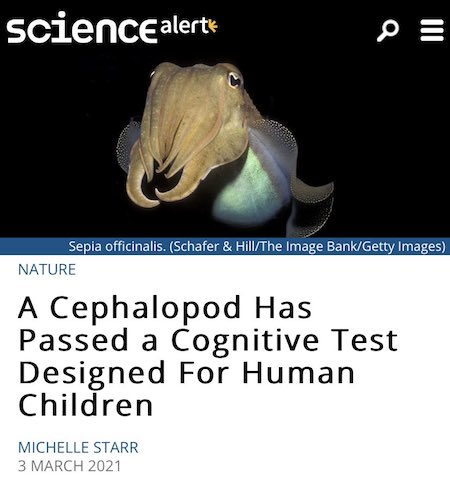

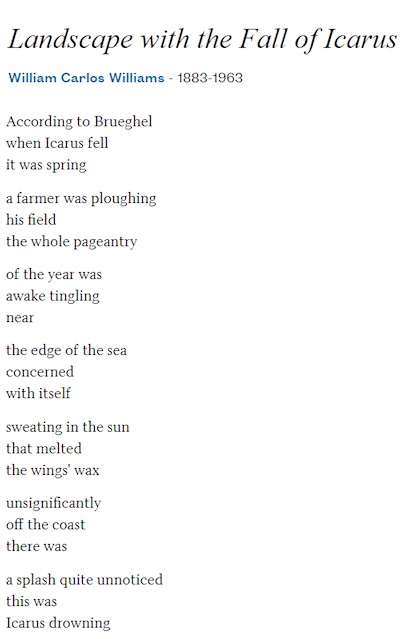

Support the Automatic Earth in virustime. Click at the top of the sidebars to donate with Paypal and Patreon.




